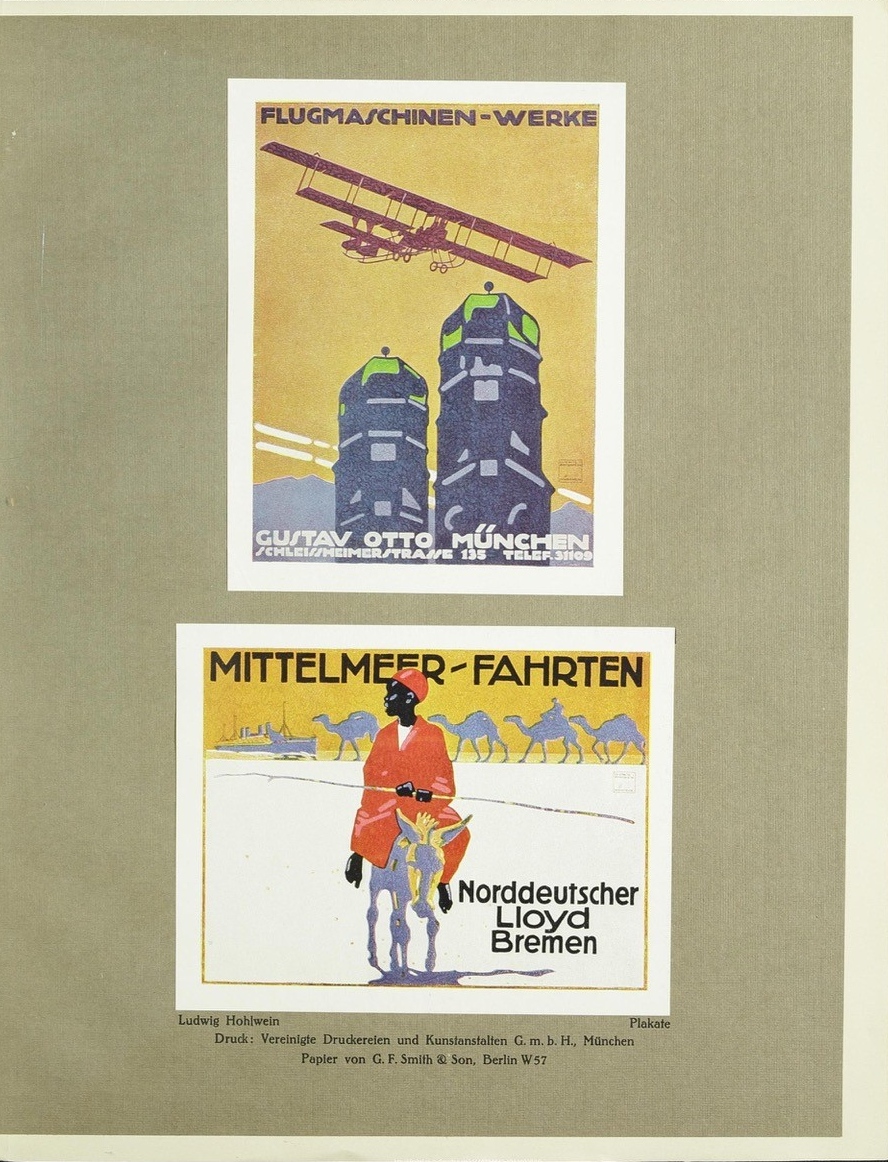Source

Source: Das Plakat 4:3 (1913), p. 109. https://www.arthistoricum.net/werkansicht/dlf/190819/19
This is a page from a 1913 issue of the art magazine Das Plakat, showcasing reproductions of two advertising posters by an up-and-coming Munich poster designer, Ludwig Hohlwein.
The first poster was drawn for the workshop of a young engineer, Gustav Otto, who was interested in aviation and motorcycles. Otto’s father had invented the four-stroke internal combustion engine; in 1910, Gustav built his first biplane and sold over 30 airplanes in the next several years. After the First World War broke out, he established a company to supply aircraft to the military, but the company (and Otto himself) struggled; he eventually sold the company to a consortium in 1916, which renamed it the Bayerische Flugzeugwerke—which a few years later, in 1922, became the Bayerische Motoren Werke—better known today as BMW. Hohlwein’s design from 1912 shows one of Otto’s aircraft flying over the famous domed towers of the Frauenkirche cathedral in Munich with the Alps in the background—a striking blend of the traditional and the modern.
The second second poster was drawn for the Bremen shipping giant Norddeutscher Lloyd, the second largest shipping company in the world after 1910, with 66 ships. Norddeutscher Lloyd dominated shipping to Germany and carried the most passengers on the transatlantic route to New York. Most of those passengers were steerage-class European immigrants to the United States. In this poster, Norddeutscher Lloyd advertises their “Mediterranean routes,” showcasing camels and an Orientalized and stereotyped native of North Africa. In 1900, 14 of Norddeutscher Lloyd’s ships were requisitioned to carry troops to suppress the Boxer Uprising.
Das Plakat became a major source of inspiration and guidance for new graphic designers. In the 1920s, Ludwig Hohlwein became the most famous graphic designer in the world, receiving contracts even from the United States and Japan. He would also go on to design propaganda posters for the National Socialists in the 1930s.

Source: Das Plakat 4:3 (1913), p. 109. https://www.arthistoricum.net/werkansicht/dlf/190819/19
SLUB Dresden